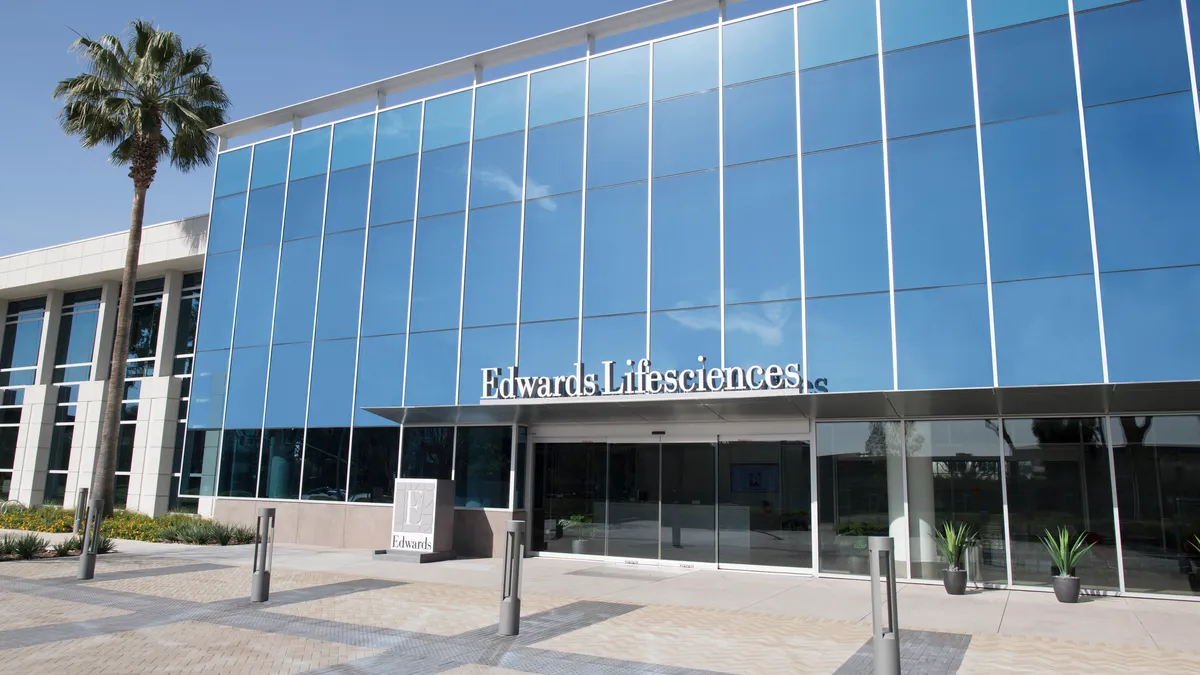Dive Brief:
- An early look at U.S. transcatheter aortic valve replacement volumes suggests sales at Edwards Lifesciences may come in below expectations, according to analysts at Jefferies.
- The analysts track TAVR volumes at one-third of U.S. sites, resulting in a model that is typically directionally accurate. Based on partial data for October and November, the analysts expect U.S. fourth-quarter TAVR sales to grow 7%, compared to a 14% consensus estimate for Edwards.
- The analysts expect the gap between the model and consensus to "moderate" as they collect more data but, with variants and hospital staffing shortages creating headwinds, warn that TAVR sales could fall short of expectations. Edwards CEO Michael Mussallem told the J.P. Morgan healthcare conference on Monday that the omicron variant surge has "impacted the healthcare system and procedures negatively."
Dive Insight:
Edwards braced investors for a slow recovery from the delta wave in late October. While cases fell across October, Edwards said TAVR volumes remained suppressed, leading it to predict fourth-quarter revenues would be in line with sales in the prior period. Analysts walked away expecting Edwards to report a 14% rise in TAVR sales in the fourth quarter. However, the model suggests the forecast may be optimistic.
According to the model, U.S. TAVR volumes increased year over year by 2% to 4% in October and 12% to 17% in November. The prediction is up on the original output of the model, when it suggested volumes fell in October. Yet, with data now available from 80% of the trackable centers, the model is still lagging behind the consensus.
Depending on how the analysts slice the data, the growth figures forecast by the model range from 6% to 9%.
It remains unclear if those figures are an accurate representation of the U.S. TAVR market in the fourth quarter. The analysts caution that the data remains incomplete and the model has been wrong in the past, such as when it tracked "a sharp step down in December [2019] growth" only for Edwards to blast past the consensus estimate.
However, the model has been directionally accurate in eight of the past 10 quarters and there are reasons to think the last three months of 2021 may have been tricky for Edwards and its chief TAVR rival Medtronic.
"Recent COVID variants and staffing shortages are leading to calls for delays to elective/non-emergent surgeries which could further impact any recovery. While the impact of staffing shortages and COVID variants remains unknown and somewhat regional at this point, calls for further delays could lead to 4Q coming in behind initial expectations," the analysts wrote.
Edwards has not yet announced a date when the company will report fourth-quarter financial results.
Looking ahead to 2022, Edwards last provided an update in early December, when it forecast 12% to 15% growth in TAVR sales. The forecast reflected an assumption that Edwards would experience a "gradual recovery" from COVID-19 and that new variants would not have a "significant" impact. With COVID-19 cases now around 180% above their prior peak, Edwards may be forced to rethink its assumption about variants.
During Monday's presentation at the J.P. Morgan conference, Mussallem acknowledged that the situation has changed significantly since the company's investor meeting last month.
"Since that time, omicron has obviously spiked and impacted the healthcare system and procedures negatively. But, considering the range of our sales guidance, we are not updating our sales guidance," Mussallem said. "Clearly, January is starting slower than we originally planned. There's no doubt about it. But we don't think that there's enough evidence for us to change anything about where we are for our guidance for 2022."
Greg Slabodkin contributed reporting.











